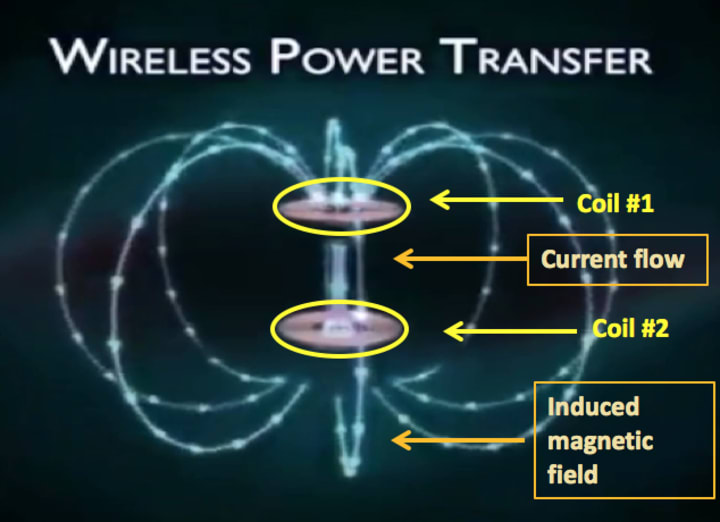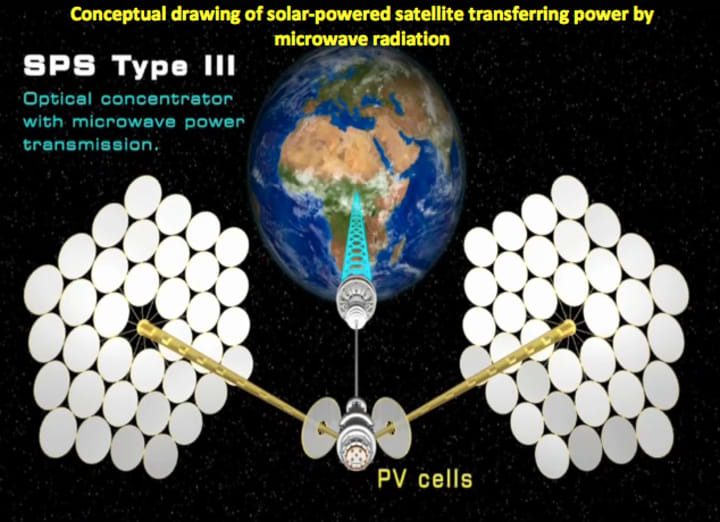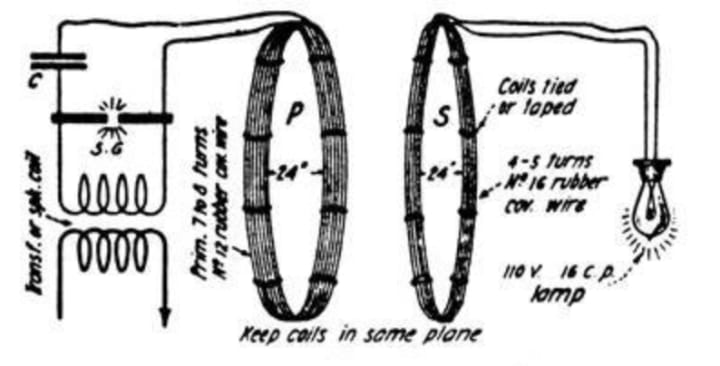A Theory of Wireless Electricity
From Theory to Reality

We discuss the revitalization and development of wireless electricity technologies within our generation. The goal is to show that society is developing wireless technology cautiously and ethically as opposed to the blind pursuit of technology demonstrated by our past. We achieve this goal by examining the various power generating and consumer electronics applications in use or planned use, by developed nations. We reviewed the concept of wireless electricity against the following areas: political and legal issues, economics, psychology and sociology, culture and the media, environmental implications, morality, and ethics.
Upon examination of these areas, we conclude that developers create wireless electricity technologies with a level of foresight lacking in the past. Despite this observation, however, we find that its development may also occur with the intent of profit without consideration as to how we can reduce the impact of the introduction of this technology. Aspects of wireless electricity application development appear to be wasteful and unnecessary. While some elements may be unnecessary, they are most likely to be a necessary evil in our society as we cannot tell the future without building towards it. This idea reinforces the need to remain cautious and steady during the development of this next generation technology.
Fire, Wheel, and a Printing Press

StoryBlocks Image
Knowledge of fire, the wheel, and the printing press catapulted humanity from the caves of our ancestors to sites beyond our solar system. Technology allows our society to grow globally as computers, the internet, and portable devices continue to enhance communication and interaction throughout the planet. Now, in our generation, the rediscovery of wireless electricity promises us a new age separate from the dependence of conventional physical connections currently used to power our devices. While wireless electricity promises a new generation of independence, proceeding with caution and wisdom ensures that the further advancement in technology does not deliver its host of problems.
We begin our discussion on wireless electricity by first examining its purpose, description of the technology, and reviewing a basic history of this technology. Discussing how some things work builds a foundation of understanding. Exploring the history of the technology, albeit briefly, allows the reader to understand how far back the concept of wireless electricity goes. Another critical point to discuss is the different types of wireless electricity applications available and whether or not they exist today.
Wireless Electricity - Purpose

StoryBlocks Image
The purpose of wireless electricity technologies is to transfer electrical power from a power source to a target without the use of conventional cabling. The different applications involved with wireless electricity transfers power over varying distances through non-radiative (magnetic fields) or radiative means (i.e., light, microwaves) (Kesler, 2013). While radiative technologies are mostly in their development phase, non-radiative applications are commercially available through some companies today. Induction, involving magnetic resonance, is the primary means of non-radiative wireless electricity (Kesler, 2013).
Wireless Electricity - Theory

Oak Ridge National Laboratory
Non-radiative wireless electricity transfer first starts with an alternating current (AC) applied to a primary conductive coil. Application of that current to the primary coil induces a rotating magnetic field. Now, bringing a second or secondary coil within range of that rotating magnetic field produces a current within the secondary coil. It is the current within the secondary coil that can power devices connected to it (WiTricity, 2018). So long as that secondary coil is within range of the primary coil wireless electricity transfer can continue. Move the secondary coil out of range of the primary coil’s magnetic field and the transfer of power stops (WiTricity, 2018).
Technology utilizing magnetic resonance generates magnetic fields that only interact with devices where that field is attuned (Kesler, 2013). Non-radiative power transfer involves the use of at least two magnetic coils whose magnetic fields and frequency of rotation are approximately matched (Figure 1). These two synchronized fields permit the transfer of electricity from a primary coil generating the field to a secondary coil at a certain distance away (Figure 1). Research performed on practical applications of this technology shows that it can operate well within international regulations (Kesler, 2013).
Radiative wireless power transfer does not produce the non-interacting and rotating magnetic fields found in non-radiative technologies. It involves generation of electricity on one end and sending that power to a receiver using a targeted beam of radiation. It includes, but is not limited to, microwave radiation or lasers capable of transmitting long distances to a target (Signh et al., 2012, p. 208-209). The target receives this radiation and, in some applications, converts it to alternating (AC) or direct (DC) current. The power received is further transmitted to another target via conventional means (Signh et al., 2012, p. 208-209). Unlike non-radiative technologies, radiative processes can interact more readily with the environment due to the power level required for transmission over long distances. Scientists take greater caution concerning the development of radiative technologies for this very reason.
Wireless Electricity - Radiative Power Transfer

Radiative wireless power transfer is similar to the idea of energy radiated from a microwave oven directed at a source. When you turn on the oven, energy is released in the form of microwaves and is directed upon whatever you have in the center. What happens to whatever is in the center of the microwave oven? It heats up and, without regulation, what’s inside is consumed by the energy. In wireless radiative electricity transfer, scientists direct that microwave energy at a specific target designed for receipt of that energy. Proper targeting of the radiation source to the intended destination is critical for the success of the power transfer.
The benefit, however, of this form of electricity transfer is in its application. It can be sent vast distances without as much worry of the energy dissipation experienced through non-radiative transfer. Radiative wireless electricity transfer is proven to work over moderate distances and even power a helicopter (Brown et al., 1966). A much more ambitious project from Japan uses a satellite to generate electricity from solar installed solar panels. The satellite then transmits that energy via microwave radiation to an earthbound station. Research into this endeavor is unfortunately still in early development (Signh et al., 2012). However, scientists are currently able to transmit power several hundred feet through the air (Signh et al., 2012). We limit the majority of our discussion to non-radiative technologies since the use of radiative wireless electricity is not commercially available.
Wireless Electricity - Non-Radiative Power Transfer

WikiMedia Commons Image
Non-radiative techniques for wireless electricity are ideal for use in short distances with no adverse interaction with the environment (Kesler, 2013). We find applications like these in a myriad of devices like medical devices, consumer electronics, and vehicles (Signh et al., 2012). Today’s electronics like the iPad and iPhone can be charged wirelessly right now. Prototypes for hospitals and vehicles are currently in development.
In today’s economy, the immediate impact of wireless technology is visible through its application in electric vehicles. South Korea, for instance, applied non-radiative wireless electricity transfer to electric buses running in Gumi (Kowalski, 2014). These buses run entirely on electricity and don’t even need to stop for a recharge. They can continuously charge while they’re in movement by passing over specially designed unground coils along their route (Kowalski, 2014). Meanwhile, the Federal Transit Association of the Department of Transportation is currently reviewing multiple prototype applications of these technologies within the United States and abroad (Brecher et al., 2014, Table 5-2).
The results of the prototype implementation of wireless electricity technologies are impressive (Brecher et al., 2014). No existing connections between a target and source for power transfer hints that such transfer can occur under any weather condition (Brecher et al., 2014). Additionally, maintenance related to degrading systems from corrosion or wear would be less than what already exists as these systems would have only minimal parts exposed to the environment. Finally, there is the potential cost reduction in its operation as these power transfer systems can be operated and evaluated at virtually all times. While the promise of wireless electricity is undoubtedly fantastic, what is equally impressive is that it has existed for over a century.







Comments
There are no comments for this story
Be the first to respond and start the conversation.